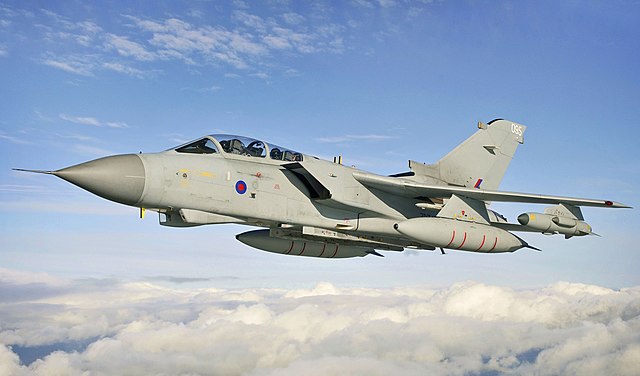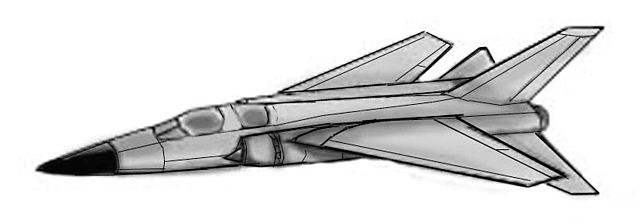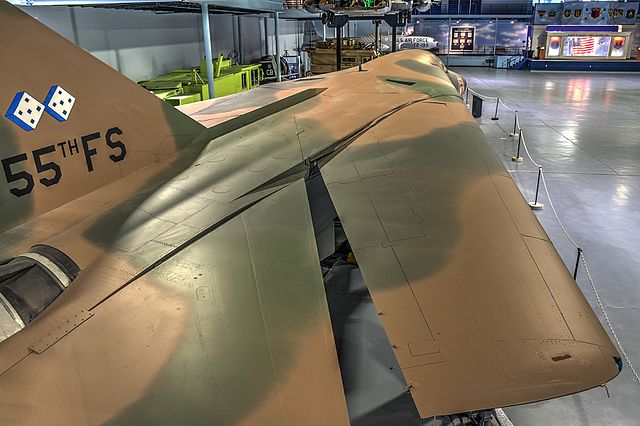The Panavia Tornado is a family of twin-engine, variable-sweep wing multi-role combat aircraft, jointly developed and manufactured by Italy, the United Kingdom and Germany. There are three primary Tornado variants: the Tornado IDS (interdictor/strike) fighter-bomber, the Tornado ECR SEAD aircraft and the Tornado ADV interceptor aircraft.
Panavia Tornado
Artist's concept of the AFVG, an ancestor to the MRCA programme
Formation take-off of an RAF Tornado GR.1 and a Tornado F.2 prototype in September 1982
Third Tornado prototype P.03 (XX947) at RAE Farnborough, August 1980
A variable-sweep wing, colloquially known as a "swing wing", is an airplane wing, or set of wings, that may be swept back and then returned to its original straight position during flight. It allows the aircraft's shape to be modified in flight, and is therefore an example of a variable-geometry aircraft.
Two Dassault Mirage G prototypes, the upper one with wings swept
A Grumman F-14 Tomcat testing an unusual asymmetric wing configuration, a possible in-flight failure case, showing one wing at minimum sweep and one at maximum sweep
The F-111 was the first variable-sweep wing aircraft to be put into production. Shown are three Australian F-111s.
F-111E on display at the Museum of Aviation, Robins AFB, United States








